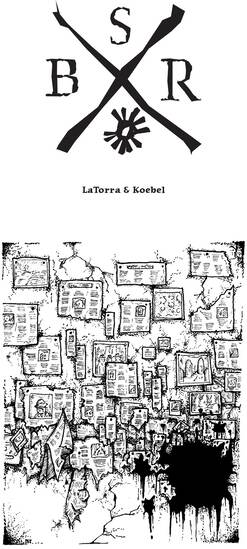 Black Stars Rise is an in-development-slash-incomplete game by Sage LaTorra & Adam Koebel, available for free download at http://black-stars-rise.appspot.com/. The short set of rules assumes the reader is already familiar with Apocalypse World or one of the many games it inspired. The players create contemporary, small-town, common people who get “caught up in the strange, dark truths of the universe.” Think Call of Cthulhu or X-Files without the mandatory investigative angle. The idea of the game is to put the characters in a strange situation and play “to see how they come out of it. They may try to get out, try to get to the bottom of it, or just try to survive—whatever makes sense to the player characters.” Character playbooks are half-a-page long, with occupation as their main structuring principle. Each playbook provides three stats, four or five playbook-specific moves, a list of relationship bonds, and details about the character’s income status and recovery needs. The innovations of the game, and the things that are to me most exciting, come from 3 main design elements. First, the four basic moves are printed on individual cards, and are two-sided. The main side is the same for all players, so everyone begins with the same basic moves. But, instead of having any kind of harm clock, wounds are tracked by having to flip over one of the player’s basic moves cards. There are three or four different versions of each wounded move, and players don’t know how their specific character reacts to being wounded until they flip that card over. The wounded versions of the moves are all similar to the regular move, but rescaled, so that a 10+ wounded is similar to the 7-9 result of the unwounded move, and the 7-9 is similar to the 6-. I love the very idea of using of cards to communicate basic moves. They remind me of the cards in Sandman: Map of Halaal. The cards always tell the players what options they have and lighten the cognitive load of the players. Then the idea of using the affordance of a back side to the cards to shift the move while simultaneously marking a wound is both elegant and clever. Moreover, there’s a direct correspondence between taking the injury and changing your move—when you flip that card, you are aware that the injury your character has suffered negatively impacts their ability to do these basic things. When all the moves are wounded, the player knows that their character is hanging by a thread. Finally, the shifting of the move allows for a kind of death spiral which makes wounded characters less effective and more likely to suffer further wounding. The second innovation is the “charging” of relationships. When a character makes a move for the benefit of another character or somehow “take[s] concrete actions to reinforce a relationship,” the player who took the action can mark the relationship as charged by placing a check next to it on their playbook. At any time that that character makes a move involving the “steady” stat, they can spend that charge to reroll and keep whichever roll is highest. I really like this mechanic for its simplicity. First, it says that our steadiness is directly related to our connections within the community. Second, it encourages players to make moves in support of the other characters, which keeps every character from simply protecting their own asses. Third, a reroll is a neat reward for these actions. It’s not a guaranteed success, but neither is it as ho-hum as a +1 or an advantage die. It feels significant without being overpowered. The third innovation is the creation of a “break” deck. Black Stars Rise deals with mind-shattering other-worldly strangeness. But instead of having a sanity clock or check, the game’s rules occasionally tell a player to draw from the break deck. Each card describes a condition that the traumatic event imposes on that character from here forward. Obsessions, fears, dreams, hallucinations, and the like are given mechanical and narrative weight, and everything you need to play it is right there on the card. Playing sanity breaks in Call of Cthulhu is always challenging because it is disruptive in some cases and easy to forget in others. You want them to have weight without killing play, and it can be a difficult line to walk. The break cards are a wonderful solution to this problem, and I found myself very excited by the possibilities of the deck. This is something I want to import into other games and create new breaks to go in the deck. The game’s only weakness is its incompleteness, which means that GM aids are in short supply. But there are far worse sins than asking the GM to do some heavy lifting.
0 Comments
Leave a Reply. |
Jason D'AngeloRPG enthusiast interested in theory and indie publications. Archives
April 2023
Categories |
 RSS Feed
RSS Feed